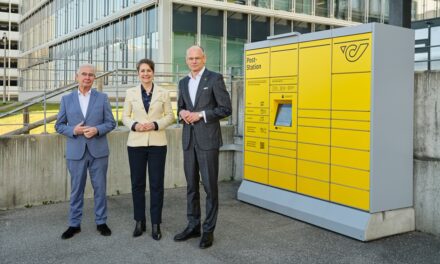
Senator Carper: Lack of a USPS fleet upgrade plan "unacceptable"
A senior US senator said today it was “unacceptable” that the US Postal Service has no plans in place to replace its ageing vehicle fleet. The average age of the 192,000 USPS delivery vehicles is getting close to 20 years, of a planned 24-year cycle, and in a senate hearing today Senator Tom Carper raised concerns with the costs and efficiency of the ancient fleet.
At today’s hearing of the Senate Homeland Security and Governmental Affairs Committee’s Federal Financial Management Subcommittee, congressmen were told that around $750m a year is spend maintaining USPS vehicles – around $18 per vehicle per day – and a further $250m a year on fuel.
Fuel costs have been rising significantly with the higher prices of oil this year, the subcommittee was told, with vehicles getting through two gallons per day on average for 17-mile average routes.
Senator Carper today criticised the US Postal Service’s 10-year business strategy, as released last March, for failing to contain plans to modernise the fleet.
Carper recognised that Congress had helped put the USPS into a poor financial situation, in which there was little funds to invest in new vehicles. But he said: “I believe it’s unacceptable that the Postal Service has no official plans to date to begin replacing its aging fleet, perhaps with more fuel efficient and cost effective vehicles, the purchase of which in large numbers could help commercialize important new technologies.”
GAO report
The Senator was also speaking following the release of a Governmental Accountability Office (GAO) report today that warned that as a result of the ageing vehicles, unscheduled maintenance costs have been increasing and now represent 31% of all maintenance costs.
The GAO report, which was commissioned by a group of Senators including Carper, also pointed to some “severe” shortcomings in the following of vehicle maintenance standards, partly because of a lack of resources and the USPS hiring freeze.
GAO director of physical infrastructure issues Phillip Herr told congress that upgrading the fleet would be costly – around $5.8bn to purchase 185,000 delivery vehicles (at $31,000 per vehicle), or $3.5bn to fully refurbish the fleet (at about $20,000 per vehicle).
Complicating factors include federal requirements for 75% of newly acquired vehicles to be capable of using alternative fuels, he noted.
Herr said USPS staff had suggested to the GAO that the delivery fleet would be capable of interruption-free service for several more years. However, he added: “While the Postal Service has been able to maintain its current fleet, the time will soon come when the cost of this approach will not allow further delays (in upgrading).”
USPS plans
Responding to Senate questions, Postmaster General Pat Donahoe said that the USPS was “looking at all the options right now” regarding its vehicle fleet.
He said: “We have been experimenting with hydrogen vehicles, natural gas, diesel, electric, hybrid. We’re trying to make sure we look at anything and everything out there.”
Two considerations for USPS vehicles, he said, were the daily cost to operate the vehicle, but also the long-term costs. For electric vehicles this long-term cost – in terms of replacing batteries – could be prohibitive.
“Right now we are in a place where we will have to buy some vehicles in the next few years, but in order to do that, we’ve got to get our finances in order,” Donahoe said.
On Friday, USPS acting chief sustainability officer Emil Dzuray is due to address the Center for Research in Regulated Industries annual Eastern Conference at which he will discuss recent trials of electric vehicles at the USPS.
Although the event is closed to the Press, Dzuray told Post&Parcel ahead of the event that the electric vehicle industry is not yet in shape to cater to the needs of the USPS fleet.
Dzuray conceded that the USPS was “really struggling” with its fuel consumption, but that the alternative vehicle industry did not have enough manufacturing capacity yet to fill the fleet’s needs.
Although vehicle industry commentators have suggested that a big order from the USPS would be enough to create manufacturing capacity, Dzuray explained that the fact that USPS vehicles would be bought with a 25-year lifespan in mind, with on-site maintenance rather than periodic replacement, meant motor manufacturers did not see a USPS order as enough to justify increased manufacturing capacity.
The USPS plan now, he said, was to continue testing technologies for the next two years, then replace the fleet over a five to seven year period.
“There’s a lot of unanswered questions,” he said. “We need to be more fuel efficient, but our goal is to find a technology that gives not only a low carbon environmental footprint but somthing that lowers operational maintenance costs.”















